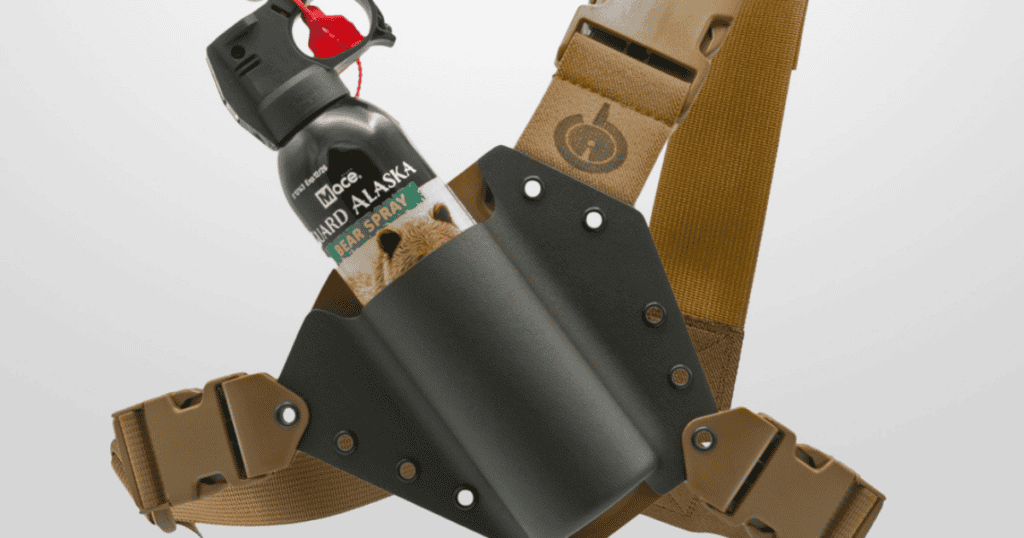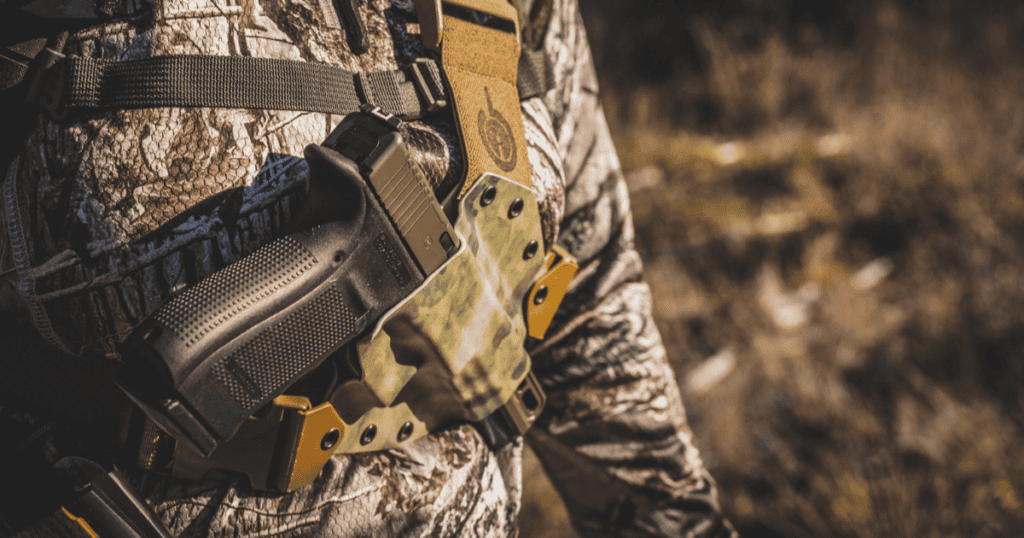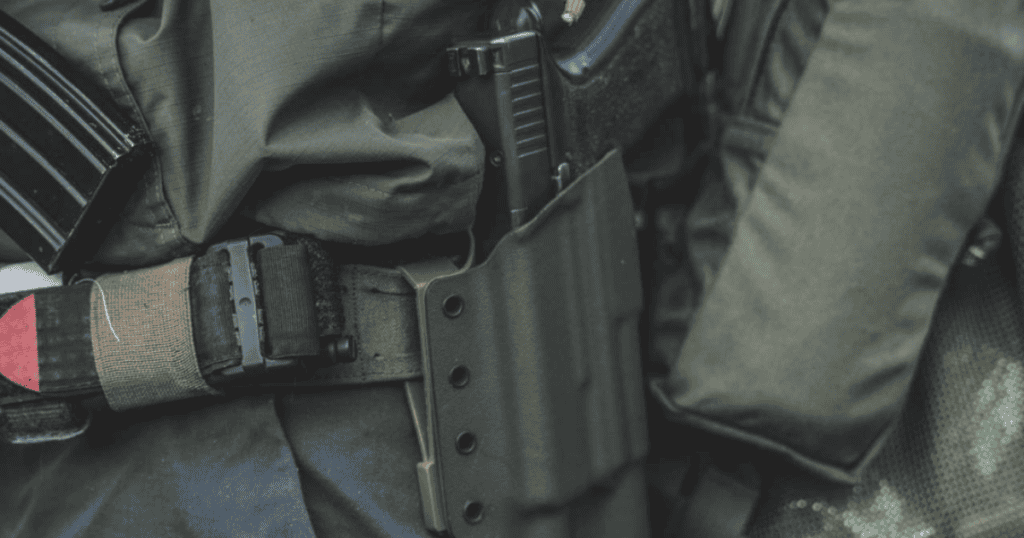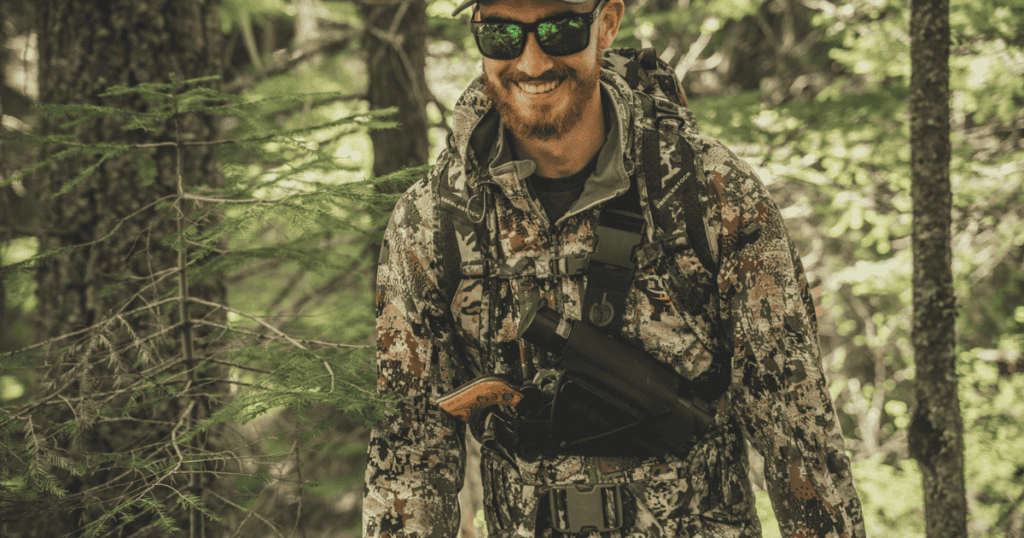From selecting the right firearms and ammunition to communication tools and safety equipment, our checklist covers every aspect important for a successful bear hunting trip. Let’s dive into the essentials to guarantee you’re fully prepared for your next hunt!
Firearms and Ammunition
When planning a bear hunting trip, one of the most critical decisions you’ll make involves selecting firearms and ammunition. The right choice can significantly influence your hunting success and overall safety.
Read Choosing the Right Firearm for Bear Hunting for a deeper dive into firearms and ammunition – but here are some primary considerations:
- Rifles: A preferred firearm due to their accuracy and range. Calibers such as .30-06, .308 Winchester, and .300 Winchester Magnum are among the top recommendations for their stopping power and reliability.
- Shotguns: For those hunting in denser foliage or expecting to be at closer ranges, a shotgun loaded with slugs offers formidable stopping power.
- Ammunition: When targeting bears, it’s essential to use ammo that can deliver a quick and humane kill. This means choosing rounds capable of deep penetration and significant damage to vital organs.
Navigation and Communication Tools
Reliable navigation and communication tools are vital for ensuring your safety, helping you remain oriented, and maintaining contact with your hunting party in areas where conventional methods might fail.
Here are several tools to consider packing for your next bear hunt:
- GPS app: GPS offers real-time location tracking and can mark waypoints. For instance, onX created a GPS Hunting App that allows you to see public/private land boundaries and includes satellite, topographic, and hybrid maps.
- Extra battery pack: A reliable battery pack is essential to keep your electronic devices charged throughout your hunt. Invest in a high-capacity battery pack to maintain device functionality, helping you stay connected and safe during your hunt.
- Dry bag for electronics: These waterproof and dustproof bags ensure that your electronics, such as smartphones and cameras, are protected from rain, splashes, and accidental submersions.
- Communicators: The Garmin inReach or inReach Mini devices are the standards among hunters for emergency communications. These compact satellite communication devices enable you to send and receive text messages, track and share your journey, and trigger an SOS alert to emergency services in critical situations.
Safety Equipment
Safety should always be a top priority when planning a bear hunting trip. From deterring wildlife to treating injuries, here’s a rundown of essential safety gear every bear hunter should have:
Bear Spray

An effective non-lethal deterrent, bear spray can stop a bear in its tracks and provide you with enough time to retreat to safety.
To ensure your spray is always at hand when you need it most, consider the Warning Shot holster.
- Accessible: The Warning Shot holster positions your bear spray where you can reach it quickly and easily.
- Durable: Crafted with rugged materials, it’s built to withstand the harsh conditions of the wilderness.
- Comfortable: It can be worn for extended periods without causing discomfort, making it ideal for long hunts.
- Compatible: It accommodates most standard bear spray canisters, ensuring your preferred brand fits snugly and securely.
- Customizable: Warning Shot comes in both a chest holster and an outside-the-waistband holster.
Read The Best Way to Carry Bear Spray for more details.
Backup Safety Weapon

In addition to bear spray, carrying a handgun as a backup weapon can provide an extra layer of security. It is crucial to select a handgun you are comfortable with and train extensively in its safe handling and use.
Here are some points to consider:
- Holster accessibility: Choose a holster that offers quick and secure access to your handgun, ensuring it can be drawn swiftly when needed.
- Ammunition suitable for bears: Opt for ammunition that can stop a bear. Typically, calibers with good penetration are becoming more popular for bear defense. Consider looking at the G9 Defense Woodsman in 10mm or 44 Mag to offer penetration and stopping power.
- Safety training: Regularly practice safety drills and familiarize yourself with your firearm so that you can handle it safely and effectively under pressure.

When carrying a backup bear hunting weapon, we recommend an outside-the-waistband (OWB) or a chest holster.
- OWB holsters, like our Sentinel OWB Holster, offer ease of access and comfort during extended periods of wear. They’re ideal for hunters with larger firearms requiring rapid draw capabilities. If your belt has MOLLE webbing to accommodate malice clips, consider mounting them to your pack.
- Chest holsters, such as our Kenai chest holster, facilitate easy access in dense brush while wearing heavy layers or backpacks. It positions the firearm in a central location, making it readily accessible.
- Another chest holster option is the Bino-Link. The holster is designed to integrate directly with your binocular harness so you can access both your binoculars and weapon. It’s perfect for quick transitions between scouting and taking action.
First Aid Kit
A well-prepared first aid kit is another essential component of your safety equipment. When assembling your kit, consider including the following:
- Bandages and gauze: For dressing wounds or cuts.
- Antiseptic wipes and creams: To clean and disinfect injuries to prevent infection.
- Tweezers and scissors: For removing splinters or cutting bandages.
- Pain relievers: Such as ibuprofen or aspirin, for managing pain or fevers.
- Allergy medications: Including antihistamines and an epinephrine auto-injector if you or your hunting partners have known allergies.
- Compression bandages: For sprains or strains.
- Emergency blanket: To retain body heat in case of shock or if temperatures drop unexpectedly.
- Bug repellent: To protect you from bites and keep your focus on the hunt rather than swatting bugs.
- Specific needs: Customize your first aid kit based on personal medical needs or specific risks associated with your hunting location.
Clothing and Footwear
The wilderness can be unpredictable, with varying terrains and weather conditions challenging even the most experienced hunters. Proper attire and footwear are paramount for a successful bear hunt, ensuring comfort, safety, and effectiveness in the field.
- Camouflage clothing: Camouflage helps you blend into your environment, but don’t bother with scent blockers. They don’t do much to trick bears, so playing the wind is more important than anything when hunting.
- Thermal layers: For hunts in colder weather, base layers are critical for managing body temperature. Opt for materials that wick moisture away from the skin to keep you dry and warm.
- Rain gear: Durable rain gear, including jackets, pants, and hats, is crucial for staying dry. Choose lightweight materials to avoid overheating and ensure easy packing.
- Gloves and headwear: Gloves protect your hands from the cold and rough terrain, while camouflage headwear helps conceal your movement. Both should offer thermal protection and fit comfortably under other gear.
- Waterproof and rubber boots: Waterproof boots keep feet dry in wet conditions, while rubber boots offer additional protection in muddy or swampy areas.
- Rugged hiking boots: Sturdy hiking boots with ankle support and durable soles are essential for treks through challenging terrains. They should provide good traction to handle rocky, uneven surfaces.
Miscellaneous Essentials
While firearms, clothing, and safety gear are essential for bear hunting preparations, several miscellaneous items are just as important for a hunting trip.
Daypack Essentials
In your daypack, carry the following items to cover your basic needs throughout the hunt:
- Food: High-energy, non-perishable snacks such as trail mix, energy bars, or jerky to keep you fueled.
- Water: Carry a durable water bottle or hydration system, and consider a portable water filter for longer trips.
- Knife: A sturdy, sharp knife is indispensable for various tasks, from preparing food to field dressing your game.
- Fire-making tools: Waterproof matches, a lighter, or a flint striker can help you start a fire for warmth or emergency signaling.
Optics

Binoculars or scopes: These are essential for spotting bears at a distance. Binoculars can help you assess the size and behavior of a bear before deciding to approach. A good scope mounted on your rifle is also crucial for a precise shot.
Consider the Bino-Link Harness to enhance the convenience of carrying your optics without sacrificing quick access to your firearm.
This harness secures your binoculars within easy reach and integrates smoothly with our custom holster, ensuring that your binoculars and gun are readily accessible in any hunting scenario.
Sleeping Bag and Camping Gear
- Sleeping bag: Choose a sleeping bag suitable for the conditions you’ll be facing.
- Tent: A lightweight, durable tent that’s easy to set up and pack.
- Camping stove: For cooking meals if you plan to camp out for multiple days like a Jet-Boil.
Cooler for Storing Meat and Hides
Bringing a high-quality cooler is important for preserving the freshness of the meat and hides you hunt. Look for coolers with excellent insulation properties to ensure your game remains in prime condition until you return home.
Camera and Extra Batteries
Lastly, don’t forget to bring a camera with extra batteries so you can capture all of your exciting hunting moments!
Ready for the Hunt

As you finalize your preparations for bear hunting, remember that the right gear not only enhances your chances of a successful hunt but also ensures your safety in the wilderness.
Happy hunting!
July 4, 2024
